
The raw adrenaline of the Dying Light series has always been its most potent drug. It’s a unique cocktail of terror and empowerment, the feeling of being a parkour-fueled apex predator one moment and cornered, terrified prey the next. For years, we’ve leaped across the rooftops of zombie-infested cities, the guttural screams of the infected a constant, motivating soundtrack. Now, with Dying Light: The Beast, developer Techland is not just asking us to survive the monster; it’s asking us to become one.
Releasing on September 18, 2025, for PC, PlayStation 5, and Xbox Series X|S, this new chapter marks the long-awaited return of the series’ original protagonist, Kyle Crane. But this isn’t the same undercover operative we parachuted into Harran all those years ago. After years of brutal experiments, Crane is now a half-man, half-monster hybrid, a walking bioweapon on a singular quest for revenge. What began its life as a downloadable content pack for
Dying Light 2 has since evolved into a full-fledged, standalone game—a decision that feels less like a simple expansion of scope and more like a deliberate, strategic masterstroke.
The mixed reception to 2022’s Dying Light 2: Stay Human left a noticeable schism in the community. While many praised its expanded parkour and ambitious world, a vocal contingent of veteran players lamented a perceived loss of the original’s gritty, terrifying atmosphere and impactful, weighty combat.
Dying Light: The Beast feels like Techland’s direct and emphatic response. By resurrecting a fan-favorite protagonist and dialing the tone back to the “sinister and grimier” feel of the first game, this new entry is a clear and calculated return to the series’ roots. It is a polished, well-crafted, and unapologetically brutal experience that refines the very best elements of the franchise—the visceral combat, the thrilling parkour, and the truly terrifying nights—while injecting a game-changing “Beast Mode” mechanic that is both narratively compelling and wildly fun. For fans of the original, this is the game you’ve been waiting for. For newcomers, it’s an intense, but brilliant, place to start your journey into the dark.
The Story So Far: Who is Kyle Crane and Why is He a Monster?

To fully grasp the weight of Crane’s new predicament, a look back at his harrowing journey is essential. His story is one of survival, betrayal, and a slow, horrifying transformation that sets the stage for the events of The Beast.
A Necessary Recap (Spoiler-Light)
In the original Dying Light (2015), we met Kyle Crane as an undercover agent for the Global Relief Effort (GRE), sent into the quarantined Middle Eastern city of Harran to retrieve a sensitive file. His mission immediately went sideways. Bitten by an infected and saved by a group of survivors in a sanctuary known as “The Tower,” Crane found himself torn between his mission and the people he came to care for. He eventually discovered the GRE’s sinister intentions—not to cure the virus, but to weaponize it—and chose to defy his handlers, siding with the survivors of Harran against the tyrannical warlord Rais and a government ready to firebomb the city to cover up its secrets.
The Following’s Critical Choice
The story continued in the massive expansion, Dying Light: The Following. With Antizin—the drug that suppresses the virus’s symptoms—running low, Crane ventured into the countryside in search of a rumored cure. There, he encountered a cult that worshipped a mysterious figure known as The Mother, who turned out to be a sentient Volatile—a hyper-dangerous infected who retained her human consciousness during the day but became a feral monster at night. The expansion culminated in an impossible choice: help The Mother detonate a nuclear warhead to cleanse Harran entirely, or defy her, which resulted in Crane being forced to ingest an elixir that began his own transformation into a sentient Volatile before he escaped into the wider world.
A 13-Year Gap
Dying Light: The Beast picks up years after these events, cleverly sidestepping the need to canonize one of those two mutually exclusive endings. We learn that sometime after his escape from Harran’s countryside, Crane was captured by a narcissistic sociopath known only as “The Baron”. For 13 long years, he was subjected to horrific experiments that twisted his infected DNA, turning him into the half-human, half-monster we see today. The game opens with Crane’s escape from this long captivity, his mind and body scarred, driven by a singular, burning purpose: to hunt down the man who did this to him and exact his revenge. This narrative jump serves a dual purpose. It resolves a tricky continuity problem from the previous game while also providing a soft reset for the character. As Techland’s own marketing points out, “After escaping from years of captivity, the world is as new to Kyle as it is to you,” making his journey of rediscovery a perfect entry point for new players.
Welcome to Castor Woods
Crane’s hunt takes him to an entirely new setting: the Castor Woods. A far cry from the dense, decaying urban sprawls of Harran and Villedor, this region is a vast, Swiss Alps-inspired valley. It’s a more rural and varied landscape, featuring a quaint tourist town, sprawling farmlands, an abandoned national park, and gritty industrial zones. This change of scenery is more than just a visual refresh; it fundamentally alters the way you traverse the world and survive its dangers.
Core Gameplay: The Art of Survival in the Wilds
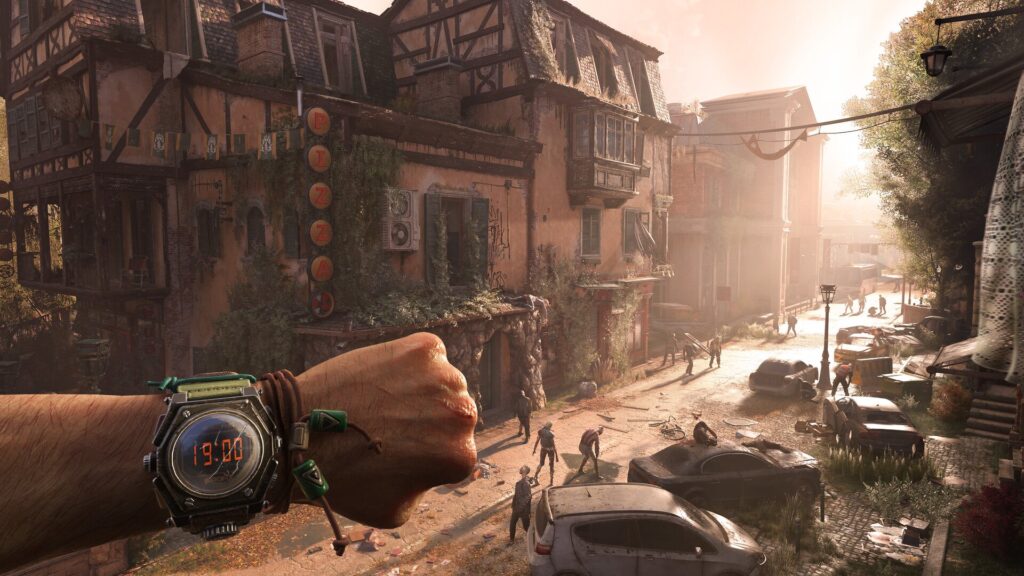
Dying Light: The Beast is built on four core pillars that define its moment-to-moment experience. It’s a finely tuned loop of exploration, traversal, combat, and crafting that is as rewarding as it is demanding.
The Day/Night Cycle: Hunter by Day, Prey by Night
The franchise’s signature day-night cycle returns, and it remains one of the most effective and terrifying mechanics in modern gaming.
During the day, the world is yours to conquer. The common infected are slow, clumsy, and easily dispatched or avoided, allowing you to focus on the core loop of scavenging for supplies, crafting powerful weapons, and completing missions for the local survivors. In the daylight hours, your greatest threats are often not the dead, but the living, as pockets of hostile bandits patrol the landscape.
But when the sun sets, the balance of power shifts dramatically. The game’s atmosphere becomes thick with dread as the infected transform into hyper-aggressive predators. They become faster, stronger, and gain the terrifying ability to sprint, jump, and climb buildings, meaning nowhere is truly safe. Night is the domain of the most lethal special infected, including the iconic and horrifying Volatiles, whose piercing shrieks will haunt your every step. Venturing into this darkness is a high-risk, high-reward proposition. While the danger is immense, you are rewarded with double experience points and access to unique missions and valuable resources that can only be found under the cover of night. Survival becomes a desperate scramble, where tools like your UV flashlight and disposable flares are the only things standing between you and a swift, brutal death. Critics have noted that the nights in
The Beast are even “darker and more terrifying than before,” leaning further into the series’ horror roots.
Parkour Reimagined: Freerunning Beyond the Rooftops
The fluid, first-person parkour system remains the heart and soul of the Dying Light experience. The ability to seamlessly climb ledges, leap between rooftops, slide under obstacles, and zip-line across vast distances is what elevates the game from a simple zombie-slasher to a kinetic ballet of survival.
However, the new setting of Castor Woods presents a fresh challenge. The towering skyscrapers of previous games are largely gone, replaced by a more “grounded” environment of forests, mountains, and smaller towns. This shift in environmental design is a deliberate move away from the high-flying, almost superhero-like traversal of
Dying Light 2, which featured tools like the paraglider that some players felt diminished the street-level tension. Critics have praised this change, with
GameSpot noting the game is more enjoyable because it “dials back the power fantasy”. The parkour system has been adapted accordingly, with a greater focus on navigating natural terrain and using your off-road vehicle to cover the vast distances between points of interest. As you progress, you’ll invest points into the Agility skill tree, unlocking new moves that enhance your mobility and help you achieve that perfect state of uninterrupted “flow,” a feeling that is arguably the most satisfying aspect of the series.
Visceral Combat: A Symphony of Brutality
When you can’t run, you must fight, and the combat in Dying Light: The Beast is a masterclass in visceral, first-person melee action. The focus is squarely on close-quarters encounters, with a massive arsenal of weapons that you can find, craft, and modify. A key survival mechanic is weapon durability; your favorite electrified machete or flaming sledgehammer will degrade with use, forcing you to constantly repair your gear with scrap or dismantle broken weapons for parts.
The game’s gore system is a true standout, a gleefully gruesome spectacle that makes every hit feel impactful. Critics have universally praised it, with GamesRadar+ calling the “amount of disgusting gore an absolute delight”. The animations are impressively detailed, allowing you to shatter a zombie’s leg with a heavy club, send its lower jaw flying with a well-aimed swing, or slice it clean in half.
But combat is more than just mindless hacking and slashing. It’s a tactical dance of stamina management, well-timed blocks that can stagger an opponent, and desperate dodges to avoid devastating power attacks. Stealth is often the smarter approach. By crouching and staying out of sight, you can perform silent takedowns or use the fan-favorite bow to eliminate threats from a distance without attracting the attention of the entire horde. Firearms are available, but they are a weapon of last resort. Ammunition is scarce, and the deafening roar of a gunshot is a dinner bell for nearby Virals, some of the fastest and most aggressive infected in the game.
Crafting & Scavenging: Your Blueprint for Survival
In the world of Dying Light, what you can’t find, you must build. The core gameplay loop is a constant cycle of exploration and creation. Using Crane’s “Survivor Sense,” you can highlight nearby lootable containers, resources, and collectibles. You’ll scavenge for everything from gauze and alcohol to metal parts and electronics. These materials, combined with blueprints found throughout the world, allow you to craft a huge variety of essential items, including medkits, throwing knives, distraction firecrackers, and powerful elemental modifications that can add fire, electricity, or toxic effects to your melee weapons.
For new players, a few tips are essential for survival: always carry extra lockpicks, which can be crafted in bulk for a mere 3x Scrap each, and maintain a healthy stock of medkits and throwable distractions. Your character’s growth is managed through four distinct skill trees: Agility for parkour, Power for combat, Survival for crafting and utility skills, and the all-new Beast tree for your monstrous abilities. As you perform actions related to each category, you’ll earn experience points, level up, and unlock new skills that will transform you from a desperate survivor into a formidable zombie-slaying machine.
Deep Dive: How to Master the “Beast Mode”
The single biggest addition to the Dying Light formula is the game’s namesake mechanic: the Beast Mode. This is more than just a new skill; it’s a complete transformation that serves as the narrative and gameplay centerpiece of the entire experience.
The Ultimate Weapon
At its core, Beast Mode is a temporary transformation that turns Kyle Crane into a monstrous, Hulk-like creature capable of tearing through hordes of infected with his bare hands. It is the literal manifestation of the 13 years of experiments he endured, a terrifying power he must learn to control.
Activation and Mechanics
As you engage in combat—dealing damage, taking hits, and executing perfect parries and dodges—a Beast Mode meter gradually fills. Initially, once this meter is full, the transformation triggers automatically. This activation instantly restores Crane to full health and unleashes his inner monster, granting him access to a devastating new set of abilities. This design serves as a brilliant comeback mechanic. The transformation is most likely to become available precisely when you’re in the most danger—low on health, surrounded by enemies, and out of options. It turns a moment of certain death into a cathartic explosion of power, preventing the game’s high difficulty from ever feeling overly punishing.
Beastly Abilities
In his beast form, Crane’s power is immense. He can rip enemies limb from limb, perform incredible long-distance leaps to close gaps or escape danger, slam down from mid-air with a devastating ground-pound attack, and even hurl massive boulders into groups of unsuspecting zombies. This mode is your ultimate trump card, perfect for clearing out heavily infested Dark Zones or turning the tide against the formidable “Chimera” boss enemies you’ll encounter on your quest for revenge.
The “Beast Controlled” Skill
While the automatic transformation is a lifesaver, the true potential of Beast Mode is unlocked through the fourth skill tree, which uses “Beast Points” earned by defeating Chimeras. The most critical skill in this tree is “Beast Controlled”. Unlocking this ability gives you manual control over the transformation, allowing you to unleash the beast whenever you choose. This elevates the mechanic from a reactive safety net to a core strategic weapon. Do you save it for a tough boss fight? Use it to quickly clear a lucrative military convoy? Or pop it to survive a terrifying level 4 night chase? The choice is yours, and mastering this power is the key to dominating the wilds of Castor Woods. It is highly recommended that you prioritize the main story quests long enough to unlock this essential skill as early as possible.
Graphics, Performance, and PC System Requirements
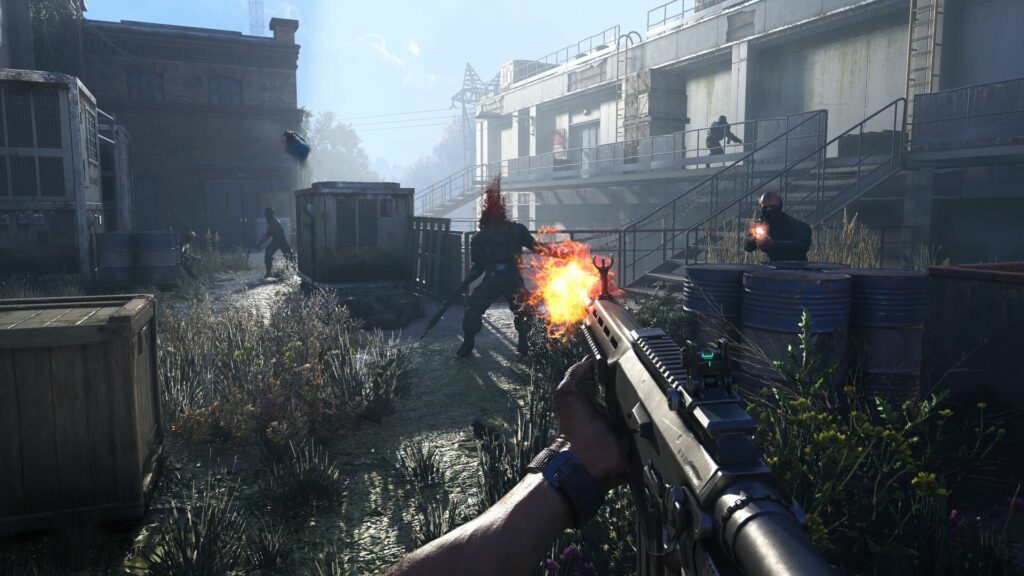
Dying Light: The Beast is a visually impressive game, leveraging Techland’s proprietary C-Engine to create a world that is both beautiful and deeply atmospheric.
Visuals and Atmosphere
The game features a dynamic weather system and a full day-night cycle that brings the world of Castor Woods to life. The new Alpine-inspired setting offers a refreshing change of pace from the urban decay of previous titles, with stunning vistas, dense forests, and quaint villages that create a unique “bleak yet beautiful” ambiance that perfectly complements the game’s horror tone. Performance analyses have shown that the game looks surprisingly good even on its lowest graphical settings, ensuring a quality experience for players on a wider range of hardware.
PC Performance Analysis
On PC, the game is generally well-optimized and runs smoothly across a variety of modern systems, particularly at 1080p and 1440p resolutions. However, to ensure a stable experience free of frustrating stutters, a graphics card with at least 8GB of VRAM is highly recommended, even though the official minimum is listed as 6GB. The game also features excellent implementation of upscaling technologies like NVIDIA’s DLSS and AMD’s FSR, which can provide a significant boost to frame rates with minimal impact on visual quality.
Console Performance
Dying Light: The Beast is available on PlayStation 5 and Xbox Series X|S. While a detailed technical breakdown for consoles is still forthcoming, Techland has a solid track record. The original
Dying Light on the previous generation of consoles performed admirably, running at a native 1080p and a steady 30 frames per second on the PlayStation 4, with the Xbox One version running at a slightly lower resolution but still providing a stable experience. Players on the current, more powerful consoles can expect a robust and optimized experience.
Table 1: PC System Requirements
For PC players looking to jump into Castor Woods, here are the official system requirements, along with some expert analysis to help you get the best performance.
| Feature | Minimum Requirements | Recommended Requirements | Journalist’s Note |
| OS | Windows 10 (or newer) | Windows 10 (or newer) | Standard for modern games. |
| CPU | Intel i5-13400F / AMD Ryzen 7 5800X | Intel i5-13400F / AMD Ryzen 7 7700 | Performance analysis suggests these are high; older CPUs may suffice as the game is heavily GPU-bound. |
| Memory | 16 GB RAM | 16 GB RAM | While 16GB is the official recommendation, sources suggest 32GB RAM is ideal for a consistently high frame rate in the expansive open world. |
| GPU | NVIDIA GeForce GTX 1060 / AMD Radeon RX 5500 XT | NVIDIA GeForce RTX 3070 Ti / AMD Radeon RX 6750 XT | A GPU with at least 8GB of VRAM is strongly advised to avoid performance stutters. |
| Storage | 70GB SSD | 70GB SSD | An SSD is essential for managing the open-world asset streaming. |
Price, Editions, and DLC: Is It Worth Your Money?
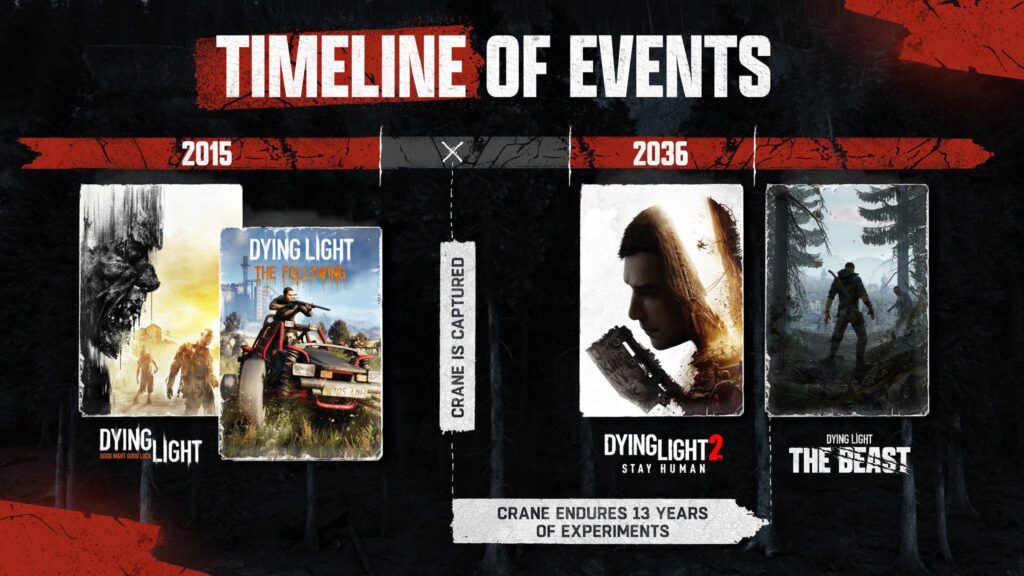
Dying Light: The Beast launches as a full-priced, standalone title, reflecting its status as a complete game rather than a simple expansion.
Pricing Structure
The Standard Edition of the game is priced at $59.99 across all platforms, including Steam, the PlayStation Store, and the Xbox Store. This positions it firmly in the AAA category.
Editions Breakdown
For players looking for extra content, a Deluxe Edition is available for $69.99. Additionally, those who pre-order the Standard Edition will receive the “Hero of Harran Bundle” as an exclusive bonus, which includes several cosmetic items and weapon blueprints that pay homage to the original game.
Post-Launch Support
It’s worth noting that Techland has a stellar reputation for long-term, post-launch support. The original Dying Light received a staggering seven years of new content, updates, and events long after its initial release. While no specific roadmap has been announced for
The Beast, this history suggests that players can likely expect a steady stream of content for years to come, making the initial purchase a solid long-term investment.
Table 2: Dying Light: The Beast – Edition Comparison
To help you decide which version is right for you, here is a clear breakdown of what’s included in each edition of the game.
| Feature / Content | Standard Edition (Pre-Order) | Deluxe Edition |
| Base Game | ✅ | ✅ |
| Price | $59.99 | $69.99 |
| Hero of Harran Bundle | ✅ (Pre-order only) | ✅ |
| Ultimate Survivor Outfit | ✅ | ✅ |
| Harran Combat Knife + Blueprint | ✅ | ✅ |
| The Follower Crossbow + Blueprint | ✅ | ✅ |
| In Jade’s Memory Pistol + Blueprint | ✅ | ✅ |
| Castor Woods Patrol | ✅ | ✅ |
| Official Soundtrack | ❌ | ✅ |
| Digital Wallpaper Pack | ❌ | ✅ |
| Castor Woods Tourist Map | ❌ | ✅ |
| Castor Woods Prepper Bundle | ❌ | ✅ |
| Castor Woods Prepper Outfit | ❌ | ✅ |
| Survivalist SMG | ❌ | ✅ |
| Roadhog (Vehicle Skin) | ❌ | ✅ |
Export to Sheets
The Verdict: Should You Buy Dying Light: The Beast?
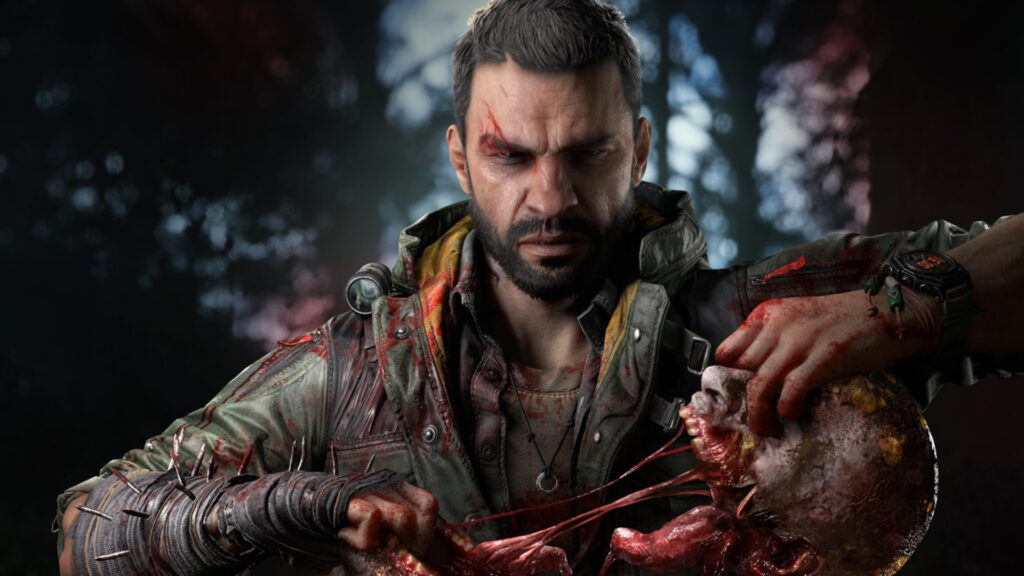
After a deep dive into the wilds of Castor Woods, the verdict is clear: Dying Light: The Beast is a triumphant return to form for the series, delivering a focused, brutal, and immensely satisfying survival horror experience.
Critical Consensus
The game has been met with strong positive reviews from critics, earning a “Mighty” 82 Top Critic Average on OpenCritic from 50 publications. The consensus praises the game for its refined and brutal melee combat, excellent parkour mechanics, genuinely terrifying atmosphere, and spectacular gore. Major outlets have awarded it solid scores, including a
7/10 from IGN, an 8/10 from GameSpot, and a stellar 9/10 from DualShockers.
Common Criticisms
While the core gameplay loop is almost universally lauded, the game’s narrative is a common point of criticism. Reviewers have described the story as a “paper-thin plot” with “cheesy and unoriginal” dialogue and a cast of fairly generic characters. Some also note that while the game polishes the existing formula to a brilliant shine, it doesn’t necessarily revolutionize it or introduce many groundbreaking innovations beyond the Beast Mode itself.
User Reception
Early community reception has been overwhelmingly positive, particularly among veteran fans of the first game. Online forums and Reddit threads are buzzing with excitement, with players praising the return of the dark, oppressive atmosphere and satisfyingly brutal combat that they felt was missing from the sequel. This strong resonance with the core fanbase stands in stark contrast to the more divisive launch of
Dying Light 2, indicating that Techland’s decision to return to the series’ roots was the right one.
Final Recommendation
Dying Light: The Beast is a fantastic game, but it excels for a specific type of player.
- For fans of the original Dying Light: This is an absolute, unequivocal must-buy. It is the spiritual successor you have been waiting for, capturing the magic of the first game while refining its best mechanics.
- For newcomers to the series: This is an excellent, if brutally challenging, entry point. The self-contained revenge story makes it easy to jump into, and it showcases the absolute best of what the franchise has to offer.
- For players seeking a deep, narrative-driven experience: You may want to approach with caution. The gameplay is the undisputed star of this show; the story is a serviceable but simple vehicle to drive the action forward.
- For action-horror enthusiasts: Look no further. The Beast delivers top-tier, visceral combat, heart-pounding traversal, and genuine, palm-sweating tension that will keep you on the edge of your seat.
Frequently Asked Questions (FAQ)
To round out this guide, here are answers to some of the most common questions players have about Dying Light: The Beast.
Is Dying Light: The Beast a sequel to Dying Light 2? No. It is a standalone sequel to the first Dying Light and its expansion, The Following. It continues the story of the original protagonist, Kyle Crane, and is set years before the events of Dying Light 2.
Do I need to play the first game to understand the story? While playing the first game and The Following will provide a deeper appreciation for Kyle Crane’s character arc, it is not required. The Beast is designed to be accessible to newcomers, with a self-contained revenge plot that serves as a great starting point for the series.
How does the 4-player co-op work? The entire story campaign can be played online with up to four players. Player progression (XP, skills, loot) is saved for all participants, though story mission progress is tied to the host’s game. Playing with friends generally makes the game a bit easier but significantly increases the potential for chaotic fun.
What are the best skills to unlock first? For early-game survival, focus on foundational skills. In the Agility tree, “Active Landing” is crucial for reducing fall damage. In the Power tree, skills that improve combat stamina and unlock basic power attacks are a priority. However, the most important goal for any new player should be to progress the main story enough to earn Beast Points and unlock the “Beast Controlled” skill, which grants strategic control over the game’s most powerful mechanic.
How long does it take to beat Dying Light: The Beast? Based on early critic playthroughs, players can expect the main story and a healthy amount of side content to take around 20 hours to complete. This is comparable in scope to
The Following expansion, which offered roughly 10 hours for its main story and another 10 for its side quests and secrets.
Are there firearms in the game? Yes, firearms such as pistols, rifles, and shotguns are in the game, but they are intentionally de-emphasized in favor of melee combat. Ammunition is extremely scarce, and the loud noise of a gunshot will quickly attract hordes of dangerous infected, making them a high-risk tool best saved for dire emergencies.
Dying Light :